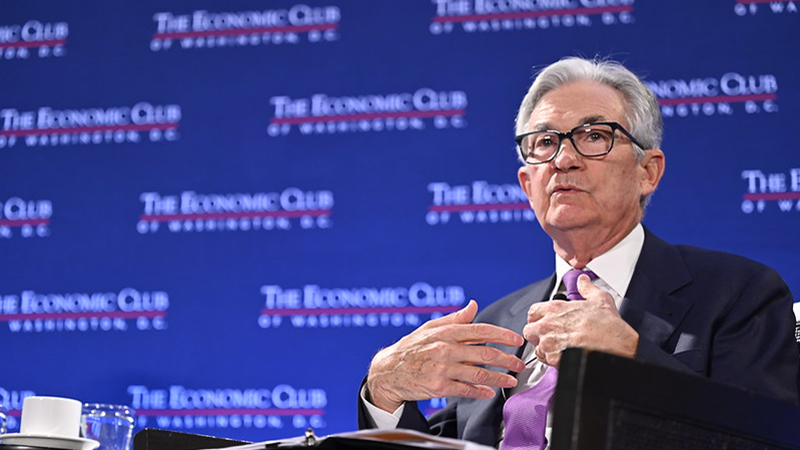The US Federal Reserve announced that the target range for the federal funds rate will remain at 5.25% to 5.5%, the peak since 2001 which has remained in place since July.
The announcement comes a week after the European Central Bank opted to maintain its interest rates and the night before the Bank of England’ announces, where rates are also expected to stay steadfast’s Monetary Policy Committee meeting on the future of interest rates. While markets anticipated many cuts throughout the year across central banks starting as soon as March, banks seem to be pushing against these estimates.
See also: ECB keeps rates stagnant and reiterates path to lower inflation
Inflation has remained sticky across the economies, hitting 2.9% in December for the ECB, and the UK CPI hitting 4% year-on-year in December. In the US, the annual inflation rate was 3.4% in December, above the 3.2% forecast.
John Lovito and Charles Tan, co-chief investment officers at American Century Investments, said: “We believe Fed policy will remain restrictive until its full effects weave through the economy and weaker growth becomes evident later this year.
“European and UK policymakers face a more challenging task than the Fed. Unlike in the US, these central banks are staring down a recession, with gross domestic product (GDP) flat to slightly negative in the last several quarters. At the same time, inflation has remained persistent and above central bank targets.”
They added: “While the Fed has a dual mandate of maintaining price stability and full employment, the ECB and BoE have a single mandate. Their monetary policy objective is to maintain stable prices.”
Anna Stupnytska, global economist at Fidelity International, agreed that for the Fed, statements seem to ask for a clearer picture of inflation before moving forward with rate cuts.
“This rules out an early start to the cutting cycle, which is consistent with Powell’s comment on March not being the base case. Given stickiness in some components of inflation, we view inflation risks as still skewed to the upside in the coming months, especially against the backdrop of a strong economy,” she said.
“This means that the Fed is unlikely to be in the rush to cut until June, and once the cutting cycle starts it will not be on autopilot – the pace of cuts will crucially depend on the growth/inflation mix at the time.”
Charles Hepworth, investment director at GAM, noted changes in the language from the Fed, with the committee still requiring greater confidence that inflation is heading towards 2% before cutting rates.
“However, the timing is still key and the Fed continues to confound markets by providing no definitive guidance on when that will be. Probabilities of a March cut bounced around above and below 50% as the press conference proceeded with traders trying to infer every nuance of Powell’s mixed messaging,” Hepworth said.
“With some softer inflation prints over the next two months, the March meeting only 48 days away is obviously very much alive. But if I was a betting man, my money would still be on a May rate cut. The Fed after all is just a bit more cautious following the inflation scare of the last few years.”
Charles-Henry Monchau, CIO of Syz Bank, also noted changes in language: “The Fed did leave the door open for cuts at some point commenting that risks to achieving its employment and inflation goals are moving into better balance. Perhaps even more notably, The Fed removed the following sentence from the statement: ‘The US banking system is sound and resilient.’”










